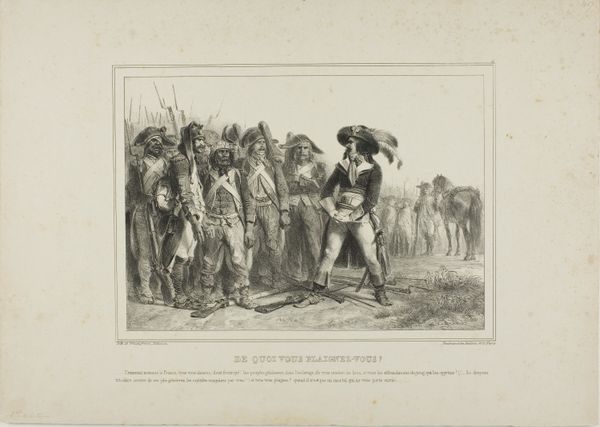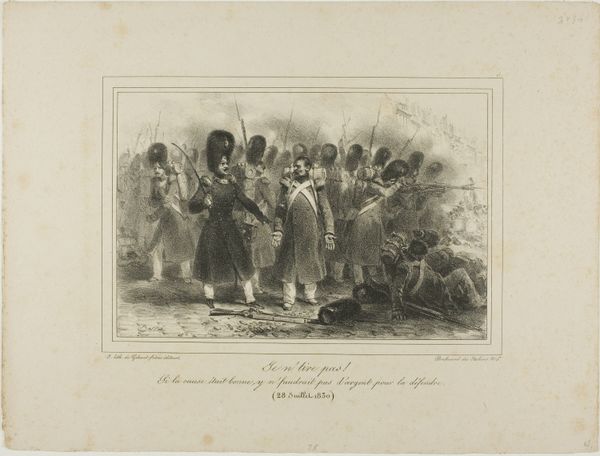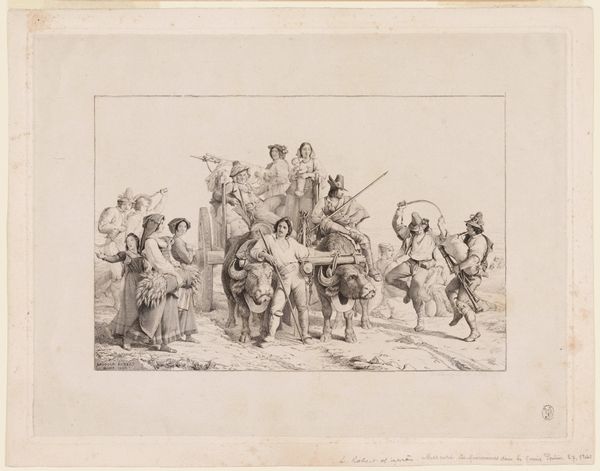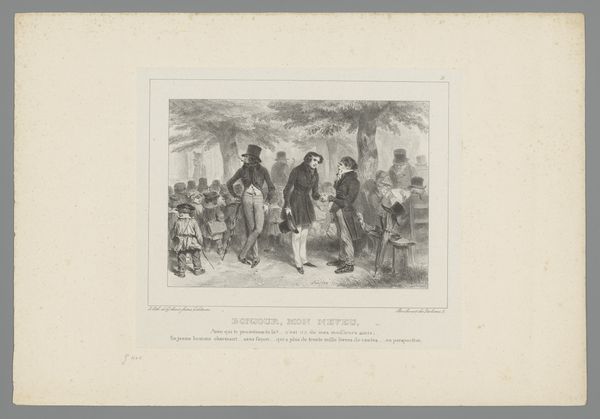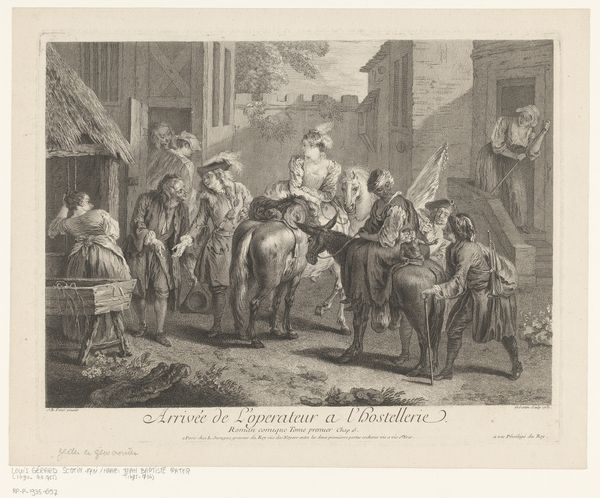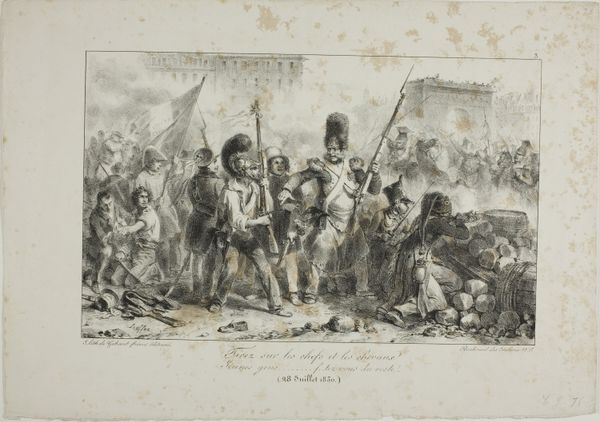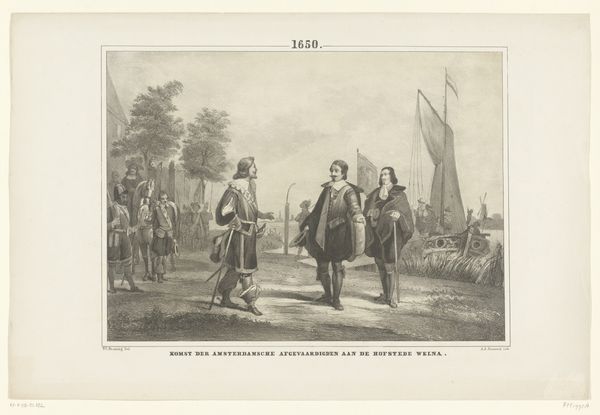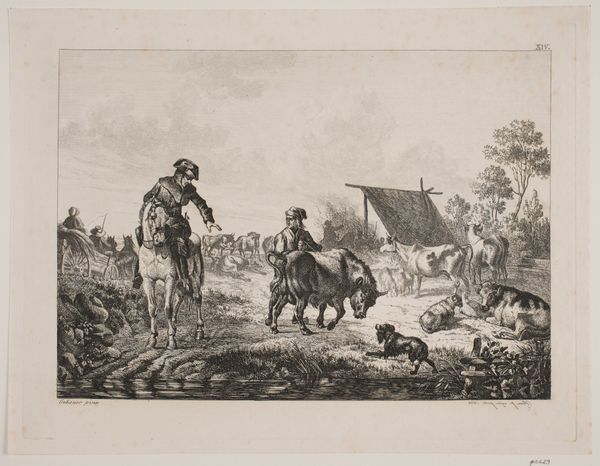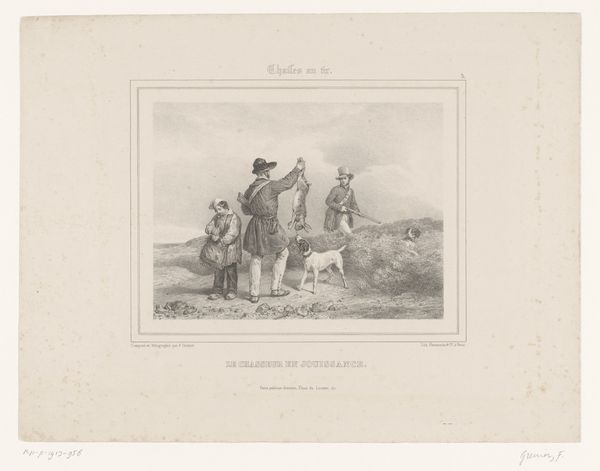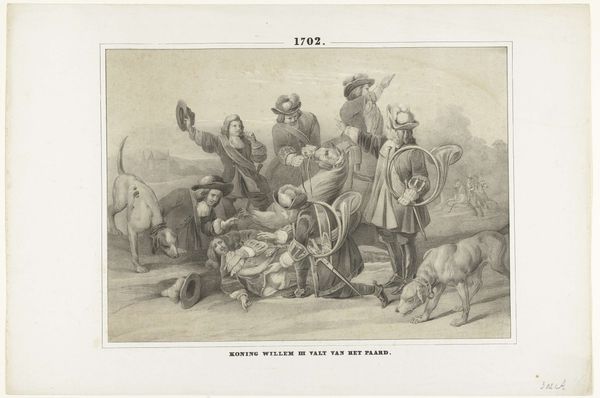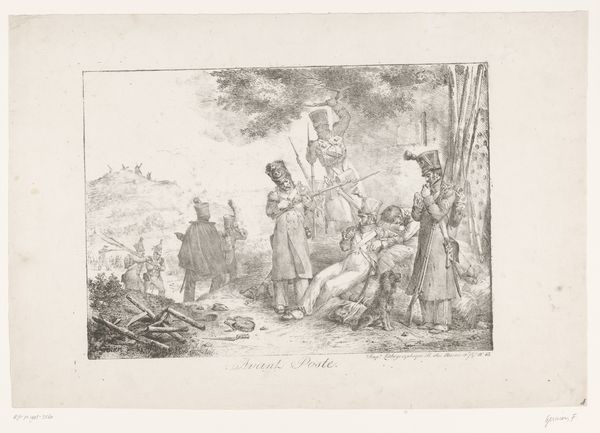
drawing, print, graphite, engraving
#
pencil drawn
#
drawing
# print
#
pencil sketch
#
pencil drawing
#
graphite
#
pencil work
#
genre-painting
#
history-painting
#
engraving
Dimensions: height 101 mm, width 142 mm
Copyright: Rijks Museum: Open Domain
Curator: This is "Gevangene wordt voorgedragen aan gezaghebber," which translates to "Prisoner Presented to the Governor," created by Charles Jacque in 1844. It’s a print, likely an engraving or etching based on a graphite or pencil drawing. Editor: My first impression is somber; a stark black-and-white palette contributes to a feeling of gravitas. The composition is intriguing, with the prisoner presented almost center-stage, yet appearing vulnerable and diminished. Curator: Absolutely. The power dynamic is evident in the staging. We see the weight of colonial authority bearing down on the prisoner, but beyond that the prisoner’s presentation is loaded with meaning. In this case, what stories about authority and vulnerability, the conquerer and the conquered, are being communicated through those specific elements of staging, dress, and gaze? Editor: Agreed. The textures are fascinating for such a monochrome work; Jacque creates depth and volume through intricate hatching and cross-hatching, focusing my eye where light falls and form unfolds. Curator: The cross-hatching evokes a sense of time and weariness, mirroring perhaps the endurance and also decay within the human spirit. The prisoner is more than a man, his garb symbolizes something other, some other identity. How are identities embraced and expressed within such contexts? Editor: Perhaps it highlights a theme of injustice; of power being used callously? Curator: It could certainly be viewed as commentary on that imbalance. The work doesn't explicitly depict brutality. The real weight, and perhaps, commentary rests in what is symbolized. The idea that the most violent of conflicts result in power over another person to that degree can be a chilling echo across generations. Editor: It speaks volumes about how artists used line and composition to construct narratives beyond surface representation. It gives you much to consider even when you are only faced with subtle differences in tone. Curator: Yes, this engraving allows for reflection not just on the event it depicts, but on what persists, or continues, to make itself felt from such interactions. Editor: Well, Charles Jacque’s choices serve as a potent visual metaphor open to endless layers of interpretation. Curator: Indeed, thank you for pointing to that which connects to more than the eyes can immediately interpret.
Comments
No comments
Be the first to comment and join the conversation on the ultimate creative platform.
